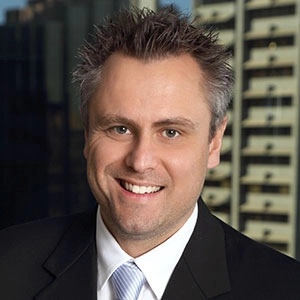Silver lining in G8's negative result
Australia's second largest childcare operator has had a rough ride but Morningstar says demographic tailwinds will help the company reverse its fortunes.
Mentioned: G8 Education Ltd (GEM)
Morningstar remains upbeat about G8 Education, despite the childcare centre operator's weakest result in five years and an almost 50 per cent fall in its share price over 12 months.
G8's reported $62.6 million in net profit after tax for the year is down 13 per cent on fiscal 2018, its lowest level since 2015.
Earnings per share has fallen 44 per cent between 2015 and 2019.
G8 CEO Gary Carroll blames the result on increased competition and government subsidies, which have squeezed G8's occupancy levels - the number of children on their books.
The rate of new supply of long daycare centres rose 4.2 per cent during 2019, up from 3.8 per cent in 2018.
Morningstar equity analyst Gareth James says several factors make the result look worse than it is. These include new accounting standards for leases, which reduced reported profit by around $10 million.
G8 also sold and acquired new centres during the year, which created various one-off costs, James says.
New childcare centre openings are also hurting profit, because they are loss-making during their ramp-up period.
But there is good news. Childcare demand is set to increase and the profit margins of G8’s rivals are also under pressure.
G8 Education (ASX: GEM)
Morningstar Rating: 5-star | Price-to-Fair value: 0.57 | Economic Moat: None
'Two silver linings'
James sees what he calls two “silver linings” in the negative result from G8, which is the second-largest childcare centre in Australia:
- Smaller competitors' profit margins are likely to be even worse, which should lead to fewer new centre openings
- G8's low profit margins mean even a small increase in revenue will have a strong positive effect on group NPAT.
G8 Education runs 500 centres in Australia, implying a market share of around 7 per cent, with a further 21 centres in Singapore. Australia’s largest childcare provider is Goodstart Early Learning – a not-for-profit organisation that runs 649 centres.
The occupancy rate is one of the most important yardsticks by which G8 and other childcare operators measure success.
For G8, this metric improved by 1 per cent to 76 per cent in fiscal 2019.
Demographic tailwinds
James believes occupancy rates will rise in response to increasing childcare demand, which has been boosted by the introduction of the federal government's Child Care Subsidy.
At the same time, the tougher economic environment for childcare operators should limit the number of new centre openings. The Australian childcare sector doesn't have sustainable competitive advantages and is prone to oversupply, particularly in light of government subsidies.
And the industry's reliance on these subsidies represents a political risk, given they can be easily removed by a government under pressure to produce a budget surplus.
But long-term demographic factors may help G8’s fortunes. James expects the company to benefit from:
- a growing population of 0- to 5-year-olds
- an increasing proportion of children in childcare
- an increasing female workforce participation rate
- increasing time spent by children in care each day
- increasing childcare fees.
The result
When the accounting changes and one-off items are excluded, NPAT fell by just 4 per cent during fiscal 2019. Profit actually rose by 1 per cent if losses from new centres are excluded.
But G8's share price is plumbing 12-month lows, having dipped below $1.70 after the result was announced on Monday. This is around 50 per cent below its $3.53 share price of 22 February 2019, and 43 per cent below Morningstar's fair value estimate.

Source: Morningstar
James values the company's share price at $3.08, his fair value estimate based on a price-to-earnings ratio of 19 and dividend yield of 3.6 per cent – or 5.2 per cent when franking credits are included.
"In contrast, the market price implies a PE of 11 and fully franked dividend yield of 9.1 per cent," he says.
"But we continue to support management's strategy in negotiating within a tough operating environment."
Improvement expected
James points to G8's ongoing improvements in other areas, including its climbing National Quality Standard rating and declining rates of management turnover within its childcare centres. Both metrics are closely watched by parents and carers when deciding between different childcare providers.
"We expect these improvements to eventually support earnings per share growth," James says.
"Although frustrating for investors, we believe the fundamental changes to the business, which led to the recent declines in EPS and dividends, have been necessary to better position the company for the rebound in childcare centre occupancy rates we envisage."

